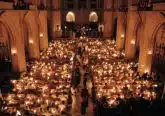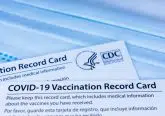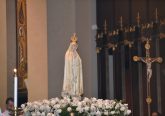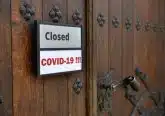Coronavirus relief must benefit private schools equitably, US Education Department says
CNA Staff, Jun 26, 2020 / 06:01 pm MT (CNA).- Federal coronavirus aid to private schools is now enforceable by law, the U.S. Department of Education has said, following concerns that Catholic and other non-public schools were being excluded from sufficient epidemic relief funds to support protective equipment for students and teachers, cleaning, training in remote education, and distance education tools.
“The CARES Act is a special, pandemic-related appropriation to benefit all American students, teachers, and families impacted by coronavirus,” U.S. Secretary of Education Betsy DeVos said June 25. “There is nothing in the law Congress passed that would allow districts to discriminate against children and teachers based on private school attendance and employment.”
The programs under the Coronavirus Aid, Relief and Economic Security Act, also known as the CARES Act, provide over $13 billion in aid to schools.
“While a number of traditional public schools aren’t sure whether they will open their doors in the fall, too many other kinds of schools are sure they won’t open at all,” DeVos said on a June 25 phone call with reporters. “More than 100 private schools, including many Catholic schools, have already announced they will never reopen, and hundreds more face a similar fate.”
Local education agencies, which are tasked with distributing the federal monies, must provide “equitable services to students and teachers in non-public schools” under both relevant CARES Act programs: the Governor’s Emergency Education Relief Fund and the Elementary and Secondary School Emergency Relief Fund.
The new rule, DeVos said, recognizes that CARES Act programs are not Title I programs.
“There is no reasonable explanation for debating the use of federal funding to serve both public and private K-12 students when federal funding, including CARES Act funding, flows to both public and private higher education institutions,” she said.
While local education agencies have “broad latitude” about the use of funds, it is expected that most of the funding will go to services responding to the problems of the coronavirus epidemic, including “equipment to protect student and teacher health” and building remote education capacity, the Department of Education said.
The rule succeeds previous guidance, which had no regulatory effect. The rule discourages “the limited number of financially secure private schools” from seeking these services.
“Providing equitable services is long-standing law under the Elementary and Secondary Education Act,” the Department of Education said June 25. “Local education agencies provide no money to private schools under these equitable services provisions. Instead, they provide secular, neutral, and non-ideological services to non-public schools after consulting with private school leaders about the needs of students and teachers.”
Two options are provided for local authorities. The first option requires that if a local education agency uses CARES Act funds for students in all its public schools, it must calculate funds based on students enrolled in private schools in the district.
If applied by all localities, this would increase CARES Act aid to private schools from $127 million to $1.5 billion, the Learning Policy Institute has said. Under the second option, if the local agency chooses to use funds only for students in Title I schools, it must calculate funds for equitable services based on either the total number of low-income students in Title I and participating private schools or based on the local agency’s Title I share from the 2019-2020 school year.
Backers of public schools and public school teachers’ unions have criticized this option, saying it would be burdensome and unworkable for many public school districts. Further, under this option funding can only go to helping low-income students. It may not be used to clean and disinfect a district’s schools because it would benefit students who are not low-income, Sheara Krvaric of the Federal Education Group consulting firm told National Public Radio.
Another critic of the move was Daniel A. Domenech, executive director of the School Superintendents Association. He said the previous standard based on Title I eligibility of private school students “aligns with both the clear intent of Congress in the CARES Act as well as the applicable underlying statute in the Every Student Succeeds Act.” Domenech said the rule would limit public schools to allocating CARES Act funding based on Title I eligibility while “allowing all private schools to generate their share of funding by counting all of their students.”
Domenech charged that the rule was “an opportunistic money grab, using the pandemic environment to advance the privatization agenda.” He said it would use funds intended for Title I-eligible public school students to “subsidize wealthier students in private schools.”
Education Undersecretary James Blew, speaking on the June 25 phone call, rejected depictions of private schools as primarily for the wealthy.
“If you think that private schools typically are like Sidwell Friends or Georgetown Day, I want to help you understand that about 90% of the private schools in America are small schools that are serving low- and middle-class working families,” he said, according to the Washington Times.
The Department of Education on June 25 said that if private schools close, local public schools could be forced to enroll thousands of transfer students “at a time when public schools are already under their own financial strain.”
“Most private schools serving low- and middle-income communities are under great financial strain due to COVID-19 because they are typically dependent on tuition from families and donations from their communities. Because the economic disruptions are shrinking these revenue sources, more than 100 private schools have already announced they will not be able to reopen following the pandemic, and hundreds more are facing a similar fate,” the Department of Education said.
The June 25 rule has taken effect, but it could be revised after public comment.
Some 5.7 million children, about 10% of school-age students, attend private schools, the Council for American Private Education, has said. About 8% of private school students are living in poor households, compared to about 19% of public school students.
Education officials in several states had ruled that private schools would receive fewer funds than many schools deemed sufficient.
In early June the Pennsylvania Catholic Conference asked the U.S. Department of Education to reverse state authorities’ decisions that the conference said gave insufficient coronavirus relief funds to Catholic and other private schools. Some $523.8 million in K-12 federal aid went to Pennsylvania through the CARES Act.
Only $19 million went to Pennsylvania’s private schools, while the state Catholic conference said $66 million was the more equitable figure.













